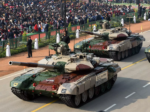From 1951 to Hangzhou: India’s Evolution in Asian Games

Image source: The Bridge
India’s performance in international sports has been on the rise in recent years, with notable achievements at events like the Asian Games and the Olympics. While cricket has traditionally been the nation’s focus, other sports are gaining popularity, and India’s sportspersons are making their mark on the world stage. This transformation can be attributed to several factors, including government initiatives, increased funding, and the emergence of talent from smaller towns and cities. However, there are still challenges to overcome in order to achieve consistent excellence.
India’s journey in international sports has been marked by ups and downs. The nation hosted the first-ever Asian Games in Delhi in 1951 and finished second in the medal tally. However, after that initial success, India’s performance declined, with only one top-three finish in the following decades, which occurred during the controversial 1964 Asian Games in Jakarta.
India’s resurgence came in 1982 when it hosted the Asian Games again, breaking the 50-medal mark. The 1986 Seoul Asiad also saw India perform well, but much of the credit went to remarkable athletes like PT Usha, who secured multiple gold medals. India’s performance became inconsistent through the 90s, with the lowest point being the 1990 Beijing Asian Games when India finished outside the top 10 in the medals ranking.
The turn of the century brought about improvements in India’s sporting fortunes. At the 2006 Doha Asian Games, India crossed the 50-medal threshold again, and in subsequent editions at Guangzhou (2010), Incheon (2014), and Jakarta (2018), India consistently secured over 50 medals, cementing its place among the top five nations in the medal tally.
The most significant achievement came in Jakarta 2018, where India clinched a record 70 medals, including 16 golds, 23 silvers, and 31 bronzes. This success set the stage for India’s impressive performance at the Hangzhou Asian Games.
Hangzhou Asian Games: A Milestone: The ongoing Hangzhou Asian Games have witnessed India’s medal tally reach new heights. With 95 medals and the prospect of surpassing 100, India is on track to achieve a historic milestone that has never been accomplished before. While this achievement is certainly a reason to celebrate, it must be viewed with a sense of realism and long-term perspective.
One encouraging aspect of India’s performance at the current Asian Games is the diversity of sports in which medals have been won. Traditionally strong in disciplines like athletics, boxing, shooting, and wrestling, India’s success now extends to a wider range of sports. This indicates a broader talent pool and a more balanced approach to sports development.
Challenges and Aspirations: While India’s sports culture is evolving positively, the nation faces several challenges in becoming a sporting powerhouse. The government has taken significant steps, such as increasing sports budgets, establishing Khelo India Centres of Excellence, and providing support to athletes through initiatives like the Target Olympic Podium Scheme (TOPS).
However, India needs to invest more in sports, both financially and infrastructurally. Bureaucratic hurdles and administrative inefficiencies also need to be addressed to ensure that sportspersons receive the support they require.
One promising aspect of India’s sports resurgence is the emergence of talent from smaller cities and towns. Athletes like Parul Chaudhary, HS Prannoy, and Aditi Swami, hailing from nondescript locations, are making their mark on the international stage. This demonstrates the growing sporting potential in every corner of India.
The Road Ahead: India’s progress in international sports is a journey that has just begun. Achieving excellence in sports is a long-term endeavor that requires consistent efforts. While India still lags behind traditional sporting powerhouses like China, South Korea, and Japan, the nation’s ascent to the fourth position in the Asian Games medal tally is a significant morale booster.
India’s rise in international sports is a testament to the nation’s evolving sports culture and increased government support. While milestones like the Hangzhou Asian Games’ medal tally are worth celebrating, they should serve as motivation for continuous improvement. India has the talent, resources, and determination to become a sporting force on the world stage, and the journey has only just begun.
Team Profile

- News Writer
- Harshit Tokas is a Political Science and International Affairs Post-Graduate with a passion for understanding and analyzing complex political landscapes. Skilled in research, data analysis, and policy development. Eager to contribute his knowledge and insights to drive positive change.
Latest entries
 English1 December 2023Ambati Rayudu Backs Ruturaj Gaikwad as a Future Leader of Indian Cricket
English1 December 2023Ambati Rayudu Backs Ruturaj Gaikwad as a Future Leader of Indian Cricket English1 December 2023Changing Tide: Pujara and Rahane Omitted from South Africa Tour Squad
English1 December 2023Changing Tide: Pujara and Rahane Omitted from South Africa Tour Squad Defence1 December 2023India Greenlights Procurement of Advanced Military Assets in Multi-billion Defence Upgrade
Defence1 December 2023India Greenlights Procurement of Advanced Military Assets in Multi-billion Defence Upgrade English1 December 2023Delhi Government Pushes for Completion of Asia’s Largest Wastewater Treatment Plant
English1 December 2023Delhi Government Pushes for Completion of Asia’s Largest Wastewater Treatment Plant









